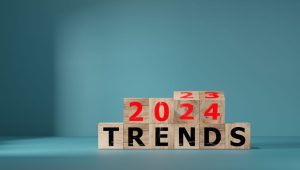11 HR Metrics That Matter In 2023
 Publié le 27 March 2023
Publié le 27 March 2023
Make data-driven choices that will boost your business by understanding, gathering and analyzing 11 HR metrics that matter in 2023.
Introduction
It’s always important to gauge the success of your business, and the right metrics are an ideal tool to help you do this. However, there are far too many possible metrics in existence to try and use them all for any given department.
That’s why we’ve compiled 11 HR metrics that matter in 2023 in our list below.
While these metrics are going to be the most useful ones this year, they’ve all also been selected based on their timelessness. In other words, these HR metrics will keep being valuable in 2024 and beyond as your business continues to grow.
1. HR Software ROI
How much return on investment (ROI) has your HR software brought you in the past year, quarter, or month?
By considering specifically the ROI that has been generated, you can quantify the utility and necessity of your software. This helps you take an objective approach to determining its value to your company.
Here’s how to calculate ROI:
Image sourced from afrebo.com
If your software is particularly new, this metric is also very useful for figuring out how long it’s taken for the tool to ‘pay for itself’, as it were. This lets you form more accurate predictions for the time it will take new tools to generate ROI in the future, helping you plan more effectively.
2. New Hire Demographics
Each time you seek out a new hire represents a new opportunity to introduce more diversity in your business. You can gauge the extent to which you’re bringing in diverse talent by measuring and tracking new hire demographics.
Some examples of demographics you might track include gender, race, age, education level, cultural background, and length of service in the company. If you are determined to make diversity and its benefits a cornerstone of your business moving forward, understanding these demographics will be an asset.
3. Employee Net Promoter Scores
When you measure eNPS (employee net promoter scores), what you’re measuring is the likelihood that your employees will recommend your company to others.
A high eNPS score indicates that employees would recommend working for your company to their family, friends, and others in their professional network, while a low score represents the opposite. The better your eNPS score is, the more likely it is that you’re dealing with one of the 33% of employees that are engaged at work.
Since eNPS is measured on a scale of 1-10, it turns abstract feelings into measurable data. This HR metric helps you get fact-based insights into new employees’ feelings on your business.
Image sourced from proceed.app
4. Retention (and Turnover)
It’s important to introduce new employees to the company in a way that will encourage them to stay in their jobs long-term. Using tools like an employee onboarding checklist help with this–and HR metrics like retention rates measure the extent to which your efforts are working effectively.
High retention rates indicate that your onboarding process is successful, and that your company is a good place to build a relatively stable career. High turnover rates, on the other hand, show that new employees don’t feel welcomed or supported, and that they’re eager to leave for different opportunities.
We’ve listed retention and turnover together, since the two HR metrics go hand in hand. As one goes up, the other goes down. Rising turnover rates have been a problem facing businesses across multiple industries and sectors, and taking stock of where your company stands is the best way to start expanding your retention efforts.
5. Training Completion Rate
How many employees are completing your in-person and remote training programs, and how many are leaving them half-finished? Your training completion rate measures this statistic.
It’s important to create training modules that employees are eager to finish. If the modules are boring or difficult to understand, your completion rate will go down.
A higher completion rate is an HR metric that matters in 2023 because it means more employees becoming more knowledgeable. This means they’ll be using that knowledge to support your company’s growth. This is part of a smooth onboarding process, which will allow them to become successful members of the work team as soon as possible.
6. Time To Hire
This metric focuses on the length of time between when a job listing is posted, and when the successful candidate signs their contract to fill that role.
It’s influenced by a number of factors, most notably the requirements of the hiring team, the types of candidates that apply, the number of places where the listing is posted, and the extent to which each requirement is seen as necessary. This metric can fluctuate a lot as a result.
A longer time to hire is generally detrimental to the company, as it leads to a position being left vacant for longer. Due to the fact that a successful hiring process takes time and financial resources, HR managers can use this date to better organize their recruitment efforts.
7. Time To Productivity
How much time goes by between a new employee being brought on board and the moment they start contributing productively? It’s important to know how long it takes them to reach this level.
A shorter time to productivity suggests employees are being onboarded successfully, since they’re able to use their training in practice fairly quickly. This also implies that the training process is streamlined and well-designed.
When it comes to tracking this HR metric, software like email tracking tools can be very useful. These tools help you see exactly when employees start sending their own productive emails. You can designate regular feedback sessions to review the first few projects completed by a new hire, and learn how they are adapting to the needs of the company.
8. Cost To Hire
This metric focuses on how much money you spend on acquiring new talent, and emphasizes the importance of ROI.
A high cost to hire is not necessarily a bad thing, provided that the employee acquired stays with the company for long enough to make that cost worth it. So, in other words, the cost to hire should be proportionate to the ROI from new employees. If it costs more money to identify a job candidate with highly specialized skills that will improve the company, then a high cost to hire is actually to be expected.
9. Absence Percentages
The greater your absence percentages, the more people are not turning up at work when they should be. You may choose to exclude absences that come from illness and sick leave from this HR metric.
If your absence percentage is suddenly shooting upwards, that can be a strong indication that you need to focus on boosting employee appreciation and recognition.
Low percentages show that employees consistently show up and work for as long as they should. While sick leave is to be expected, and there are unexpected events that may take precedence over work, a high absence rate does note speak highly of your workplace.
Image sourced from stairsfordesign.com
10. Process Optimization
Are your HR department’s processes as streamlined as they can be, or do you need to hire backend developers to help smooth things out?
Process optimization measures how well-designed and executed your workflows are. The better the optimization, the less time is wasted in completing repetitive and unnecessary tasks, which means your employees are working as productively as they can be.
11. Goal Achievement
This final HR metric that matters in 2023 is a rather multifaceted one. It mainly focuses on the extent to which your HR department (and the hires they brought to your company) were able to complete the goals they set, or how efficient they were in achieving company objectives in a set period of time.
Of course, more goal achievement is always a good thing.
If you’re finding teams lagging behind in this metric, it might be time to ensure they know how to set goals effectively–and how to plan to meet them realistically.
In addition to measuring goal achievement, it’s also important to recognize and reward employees for their hard work and contributions. Employee recognition software can help streamline the process and ensure that employees feel valued and appreciated, which can lead to increased job satisfaction and retention.
Final Thoughts
The 11 HR metrics that matter in 2023 are some of the biggest, most important stats to take into consideration. That’s not to say that they’re exhaustive though; there are always more metrics out there, so if something you’d like to gauge isn’t on the list it’s still worth searching for it.
HR metrics should always help you assess the current state of your HR department, as well as any processes they oversee. The metrics we’ve compiled are helpful in giving you an accurate, contextualized idea of that state. This is what makes them so valuable.







